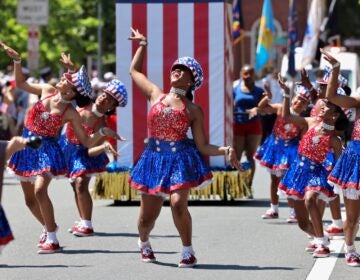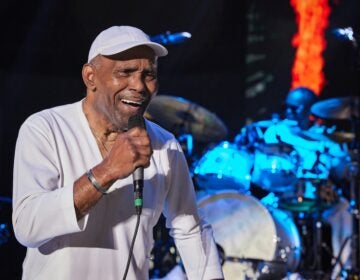Welcoming Mormon temple to Philly, library offers glimpse into LDS history
The Free Library of Philadelphia wants to be a good neighbor to the new kid on the block, the Church of Jesus Christ of Latter-day Saints.
The Mormons have just completed construction of a new temple along the Ben Franklin Parkway, two doors down from the main branch of the library, and they are offering rare public tours of the sacred space. So, in turn, the library created an exhibition of rare Mormon books, on view until next spring.
The Mormon faith has had its share of drama since 1827, when founder Joseph Smith translated engravings on golden plates into the Book of Mormon: divine inspiration, a new alphabet, a new currency, mass migration, political bravado, violent uprising, murder.
The Free Library of Philadelphia and its partner organization — the Rosenbach Museum and Library — together amassed more than 70 rare books tracing the history of the Church of Jesus Christ of Latter-day Saints (LDS). Co-curator Allison Freyermuth included a first-edition Book of Mormon, printed in 1830, and — even more rare — a first-edition Book of Mormon translated into Hawaiian.
“It was translated by a Hawaiian man, and they took it to be printed in San Francisco,” said co-curator Freyermuth. “They shipped them all back and, before they could be distributed, there was a fire. Most of them were destroyed.”
Freyermuth, the head of the Free Library’s Rare Book Department, where the exhibition is held, included examples of Mormon money. The religious group printed its own currency to be used in its own bank, the Kirtland Safety Society. It eventually collapsed.
They also created their own alphabet, called Deseret, a written language with characters wholly invented by George Watt, the secretary to Brigham Young. The exhibition has original copies of the Deseret News, circa 1860, looking like a cross between Gaelic and elvish.
“It’s a phonetic alphabet that was devised to help non-English speaking converts learn how to read and write English,” said Freyermuth. “It didn’t take.”
The insularity of the Mormons caused friction with their non-Mormon neighbors, who disapproved of the practice of plural marriages (LDS would eventually ban polygamy in 1890). That friction escalated into the assassination of their leader, Joseph Smith, in 1844, by an angry mob of 250 anti-Mormons who stormed the Missouri jail cell where Smith and his brother were imprisoned.
“[They] poured a shower of bullets into the room where these unfortunate men were held,” wrote Lyman Littlefield in his account, “The Martyrs” (1882), on view in the exhibition. “They fell as martyrs amid this tornado of lead.”
In spite of — or because of — the hardships of the pioneering Mormons, the Church of Jesus Christ of Latter-day Saints is now 15 million strong around the world. Visitors to the new temple on the Parkway during the public tours may see a few later-day anti-Mormons holding protest signs at the sidewalk entrance.
The library’s exhibition is meant to be a primer for the non-converted and a neighborly gesture of good will to the LDS congregation.
WHYY is your source for fact-based, in-depth journalism and information. As a nonprofit organization, we rely on financial support from readers like you. Please give today.














